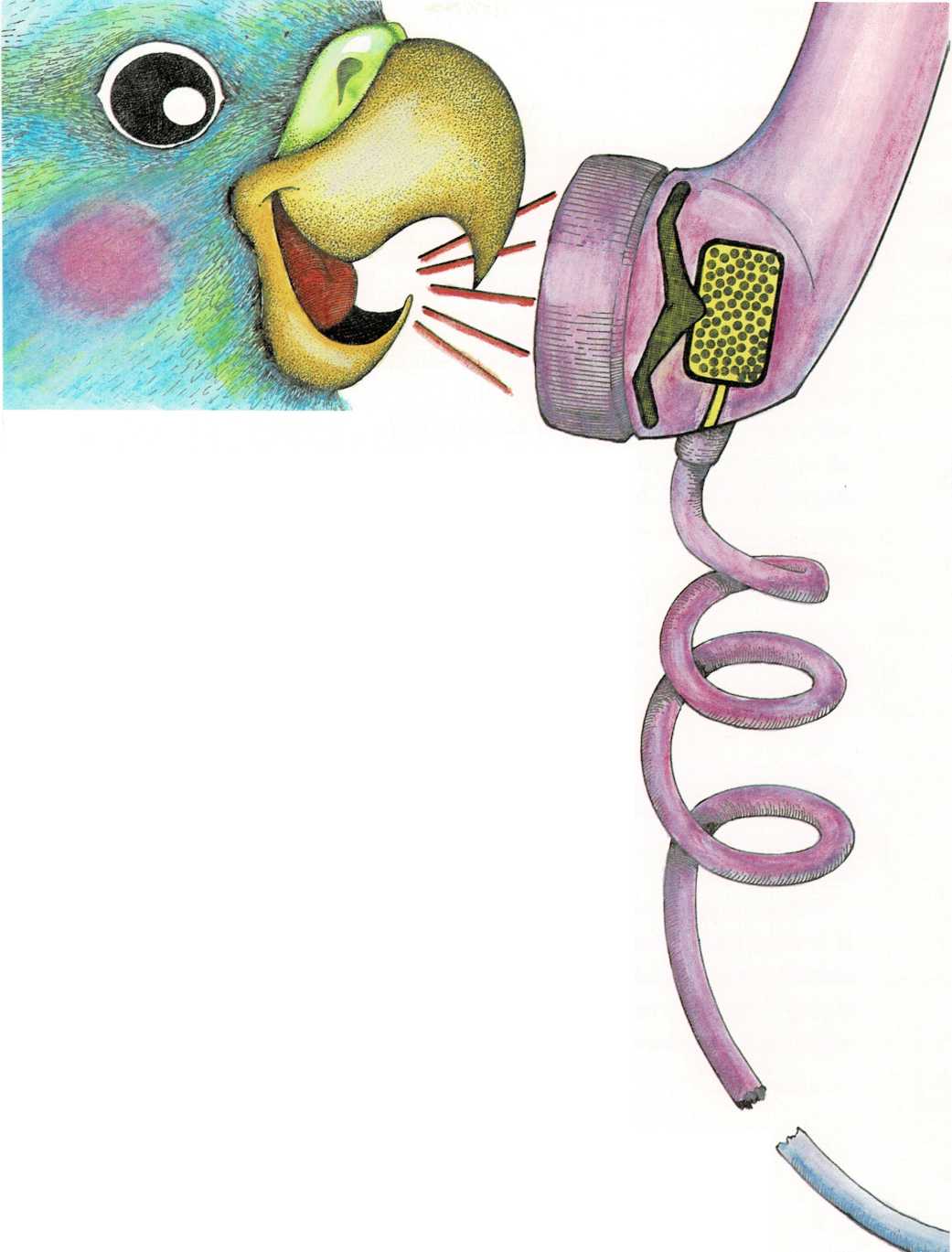
What makes these things work?
When you call a friend on the telephone, your voice doesn’t really
travel through the wire. Your friend hears a copy of your voice—a copy
made by electricity.
Inside the mouthpiece of your telephone there is a thin sheet of metal
called a diaphragm [(dy]{.smallcaps} uh fram). Behind the diaphragm
there is a small cup filled with grains of a black powdery chemical
called carbon.
The sound of your voice makes the diaphragm move in and out, or vibrate.
As it vibrates, it presses against the carbon grains—sometimes very
hard, sometimes very lightly.
Electricity passes through the carbon on its way through the telephone
wire. When the carbon grains are squeezed together, the current travels
through them easily. But
when the grains are spread apart, only a little
current can get through. So the vibrating
diaphragm causes strong or weak pushes of electricity to travel through
the telephone wire.
Inside the earpiece of your friend’s telephone is an electromagnet. When
the strong or weak pushes reach it, they cause this electromagnet to
make strong or weak pulls on another diaphragm. These pulls make the
diaphragm vibrate, producing sounds just like the ones you made. So your
friend hears a copy of what you said—a copy made by electricity in a
wire.
The music from a radio is an electric copy, too—a copy that travels by
air.
Microphones and other equipment at the radio station change sounds into
strong and weak electric signals. Then the signals are sent through the
air from the station to your radio.
When you tune in the station, the signals go to an electromagnet in the
radio speaker. The strong and weak pulls of the electromagnet cause
parts of the speaker to vibrate and produce the sounds you hear.


